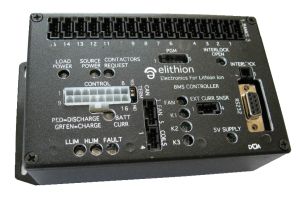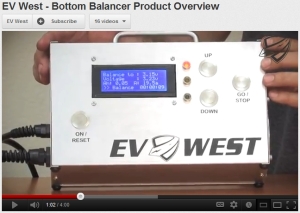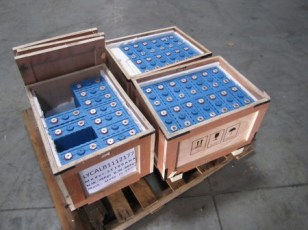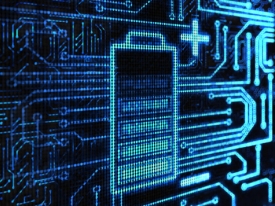In the Balance
Battery chemistry is a mysterious and arcane science that dates back to ancient Iraq, where theory holds that the Baghdad Battery was used to electroplate gold onto silver and possibly used to power ancient light bulbs. Of all the subject matter I’ve grappled with during this EV conversion project, battery technology has been the most opaque and confusing. Creating electricity with magnetic fields seems so clean and straightforward compared to the messy business of electrochemical reactions. But of all of the technologies that comprise an electric vehicle, batteries show the most promise of growth and innovation. A click on the image above will link to a lovely ditty from The Orb’s Baghdad Batteries.
.
It is probably not surprising that the complex chemistry at the very heart of EV technology has completely polarized its advocates. There is a very lively debate online among EV enthusiasts about the proper way to charge a battery pack. And by lively, I mean contentious.
.
Top-balancers strongly promote using a BMS to protect cells from overcharging, and to ensure all cells are equally charged before driving the car. Internal differences will then cause cells to naturally discharge at different rates until the weakest cell trips a low voltage event. At that point the BMS can put the controller into limp mode so that cells are not damaged by over-discharging. To recap, top-balancing is where all cells begin their discharge cycle from the same top level, although their state at the bottom of their discharge may not match.
.
Bottom-balancers assert that before being put into service, all cells should be initially discharged to the same floor level, which is usually done manually using a bottom balancing device, as seen above. The pack is run without a BMS, and from that point forward the charger is trusted to shut itself off when the pack reaches top voltage. Using this method, internal differences will charge cells to unequal top levels, but that point is irrelevant according to bottom-balancers. They emphasize that the cells should all arrive at the bottom of the charge together. Cells will usually maintain the same end charge level over time, and a bottom-balance touch-up will only be needed every few months. So in bottom-balancing, all cells do not start their discharge cycle at the same charge state, but they finish discharging at the same bottom level, eliminating the risk that individual cells could go into deep discharge accidentally.
.
There has been a perception that the bottom-balancing crowd is wholly anti-BMS, and indeed some of them are, viewing the BMS as an expensive and unnecessary fire hazard. In contrast, top-balancers see the BMS as a crucial investment in a safety net of proper monitoring and charging protection, keeping their costly battery pack out of danger’s way. A few outspoken souls in each camp see their opponents as misinformed fools, but I’m not taking sides.
.
The common denominator on both ends of the debate is getting the most range and life from a battery pack. Pack health and useable range boil down to one primary concern: The pack is only as strong as the weakest cell. A weak cell has diminished capacity, meaning that it holds much less charge than its pack brethren, and depletes quicker. Think of it as tiny bladder syndrome: Filling up much too quickly, and emptying a much smaller volume than normal. This becomes a real problem when the entire bus and all passengers are sidelined by one person that needs to drink and pee every 30 minutes. Exactly the same is true of a series battery pack, with the usable capacity of the entire pack defined by the limited range of the weakest cell.
.
It is widely accepted that LiFePO4 batteries will stay healthy and last many more cycles if they operate in a moderate charge/discharge range. This means never charging them too high, and never discharging them too low. A good BMS will automatically set upper charge limits, pinpoint any weaker cells that have diminished capacity, and shunt current away from them so the rest of the pack can come up to full charge. Likewise, a good charger will stop at a preset upper charge limit, but because it can only sense the average pack voltage, weaker cells that charge quicker will far exceed the recommended limit before the charger decides the pack is full. This could leave the remaining healthy cells significantly undercharged, or send the overcharged cells into thermal crisis. Also, because the average charger is not sophisticated enough to recognize weak cells, they will need to be located manually with a voltmeter.
.
A controller-integrated BMS will drop the motor into limp mode if any of the cells dip into deep discharge territory. This is to prevent cells from being damaged by any further high current draw. A good BMS will also identify the discharged cell, and report various parameters to assess its state of health. Conversely, if one operates an EV without a BMS, then the SOC (state-of-charge) meter and/or amp counter is crucial to knowing when the pack is depleted, and bottom-balancing is essential so that no single cell strays further into discharge than the rest of the pack.
.
Even top university electro-chemists promote individual cell monitoring and balancing as the best engineering solution, but apologetically admit that it is cost-prohibitive for mass manufactured vehicles. Rigorous cell matching is the more economical way to go for a production line EV, which greatly simplifies or even alleviates the need for balancing altogether. Click on the image above for a great crash course in lithium battery technology, and jump to 1 hour and 9 minutes for some key remarks on cell balancing. Another great discussion of top vs. bottom-balancing is offered by Davide Andrea, engineer at Elithion, and author of Battery Management Systems for Large Lithium-Ion Battery Packs.
.
So what conclusions are we left to draw? Here are some of mine:
* Cell balancing, whether top or bottom, is merely a way to compensate for mismatched cell capacity which creates issues during charge and discharge.
* Bottom-balancing and running a pack without cell monitoring puts great faith in the quality and uniformity of the cell brand.
* Bottom-balancing without cell monitoring does nothing to identify and prevent deep discharge or catastrophic overcharge of errant cells.
* In the event of over-discharge, a top-balanced pack risks the well-being of just the single weakest cell, while bottom-balancing risks the entire pack.
* Cell monitoring and top-balancing are generally lumped together, but there is nothing to prevent bottom-balancing a pack while using the BMS solely to monitor cells without using the top-balancing feature.
.
All of the above research is just a preamble for the next blog post, where I am prompted to put all of this new knowledge into action.
.









Excellent summary on battery cell balancing. I especially enjoyed the history segment at the beginning. I’m not a fan of a battery management systems, but I do believe a battery monitoring system is needed. That is, I want to protect individual cells from going outside the safe range (2.5 and 3.6 V), but I don’t want to be adjusting balance on every charge cycle. From what I’ve read, cell balance (top or bottom) should be based on resting voltage, as resting voltage is only weakly correlated to voltage under charge or discharge. Also, many people are reporting very little cell drift over time.
The disadvantages of top balance: It is more diffificult to know when 1 cell is nearly empty. Pack voltage won’t change very much whne only 1 cell reaches the “knee” in the discharge curve, and without a BMS warning, the driver will not notice until it is too late and the cell is killed.
Bottom balancing disadvantage: The charger must be set to avoid overcharging the cell with the lowest capacity, as this cell will be fully charged before all the other cells. If the cell fails with a short, the pack voltage will drop by 3 volts, and the charger could fail to terminate and then over charge the next cell, causing a chain reaction that could wipe out a bunch of cells.
Top or bottom balancing can both work, but need different strategies to avoid the pitfalls. I plan to monitor my cells and not balance on every charge cycle. I want the charger to be able to terminate the charge at the proper voltage on its own, and the driver to stop driving when the amp hour meter indicates the pack is low. The cell monitoring system will function only as a back up, to intervene if the voltage is above 3.6 volts or below 2.5 volts.
joey - December 7, 2012 at 9:48 am |
Thanks Mark. All the Top and Bottom questions that I was afraid to ask!
Jimmy Young - December 7, 2012 at 4:38 pm |
For sure, I would like to rely on the integrity and consistency of cell behavior than fuss with a complicated jumble of electronics designed to balance the pack. Managing a battery pack is like keeping a constant and vigilant eye on a 3 year-old around a swimming pool. Once we tap into zero-point energy, we won’t need all of this foolishness.
markbrems - December 7, 2012 at 6:00 pm |
Interesting.
julia jones - December 10, 2012 at 10:14 pm |
[…] Preizkusil sem še skupino štirih celic. Po zaslonu sodeč deluje natančno. Na levi je normalen prikaz, na desni sliki pa ročno balansiranje baterij. Tako naj bi deloval moj sistem polnjenja. Na cca pol leta bom celice do konca izpraznil in jih nato napolnil dokler prva celica (najšibkejša) ne doseže 3,8V. Tako bom zavaroval vse celice pred prenapolnjenjem in hkrati posredno pred globokim izpraznjenjem, ki bi lahko usmrtilo celico. Hrane za možgane o ti “Balancing celic” najdete tu: https://914electric.wordpress.com/2012/12/06/in-the-balance/ […]
BMS na novo « Mazda MX3 MAGLEV - January 19, 2013 at 12:56 pm |
Translation from Slovenian of the above website that links to this blog:
I’ve tested in a group of four cells. On display are works accurately judging. On the left is the normal display to the right of the picture and manual balancing of batteries. This should act my charging system. At about half of the cells will be emptied and then filled until the first cell (the weakest) reaches 3.8 V. I will protect all the cells from overcharging and also indirectly from deep discharge protection, which could be put to death cell. Food for thought on the so-called “Balancing cell” can be found here: https://914electric.wordpress.com/2012/12/06/in-the-balance/
markbrems - July 25, 2013 at 11:26 am |
Its really good to see people now giving considered opinions after years of scary evengelism. I’m a bottom balancer myself but Joey points about “if a cell shorts” is right. For me I’m running 20AH A123’s which are known to do this due to poor quality control. This is compounded by having cells in parallels of 6. If one goes down it will drag the other 5 to zero then any pack load will force them into reverse. So what I intend to do is monitor all 29 rows with a row of passive circuits that can warn and even kill the charger. An on the fly bottom balancing would be nice – not shunting but trickling the weakest up when all the pack is low. Warning, any signal wires that are not shielded and opposing voltage (aka CAN BUS) are a danger in an electrically noisy environment. I know no BMS system that do this or offers a guarantee of safety.
Andyj - July 24, 2013 at 1:55 am |